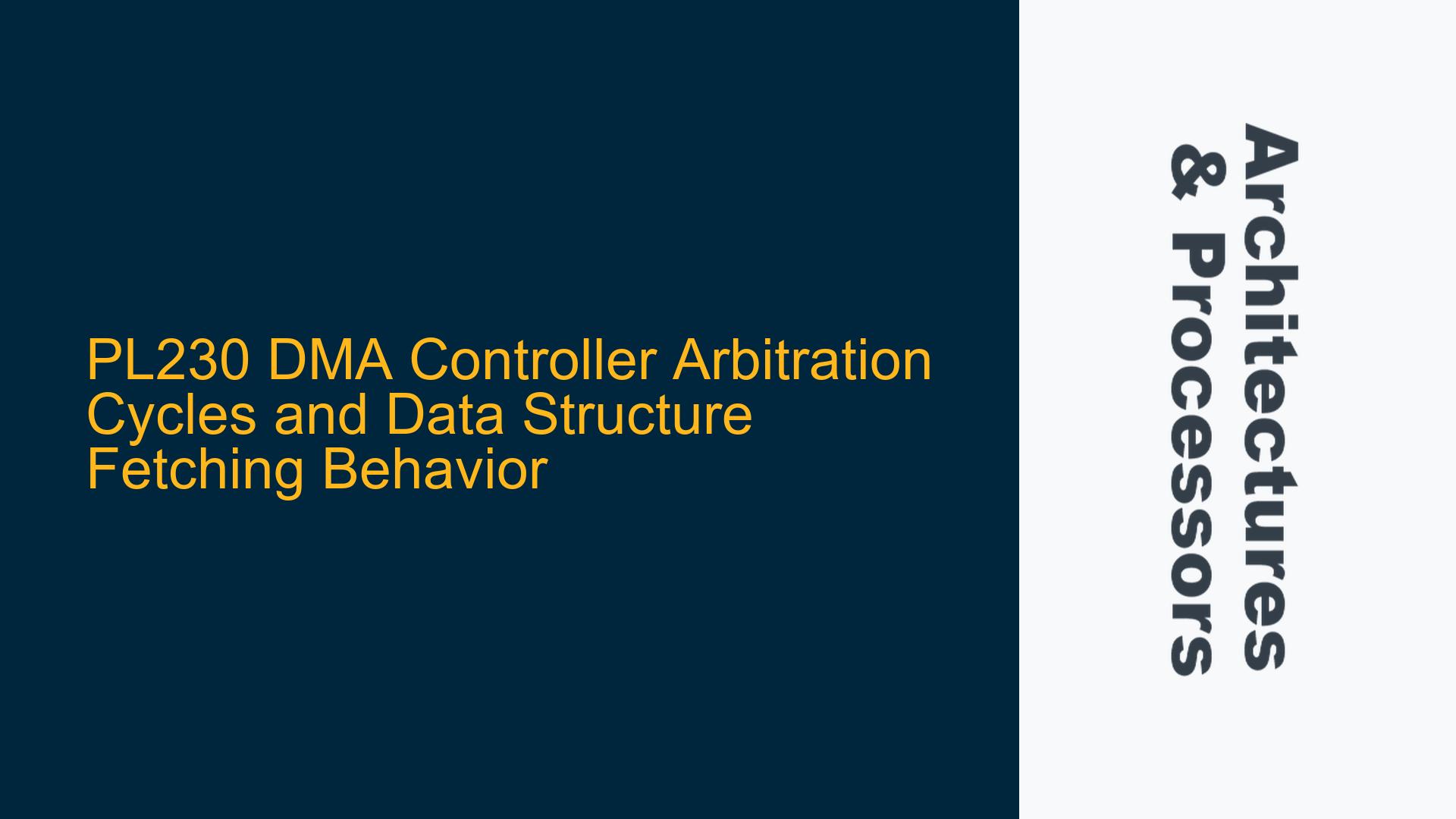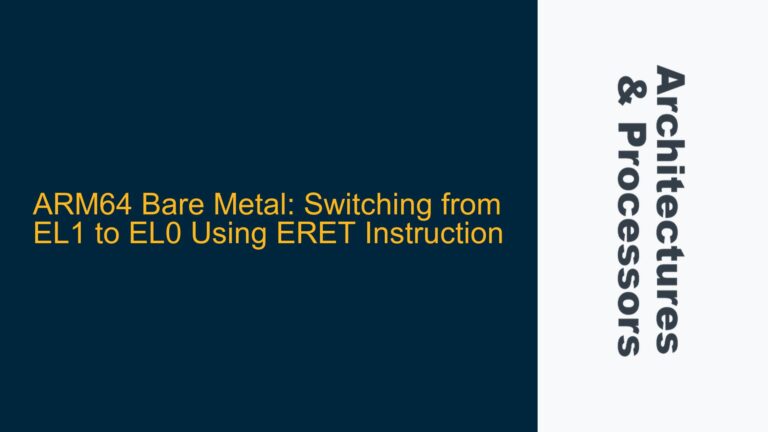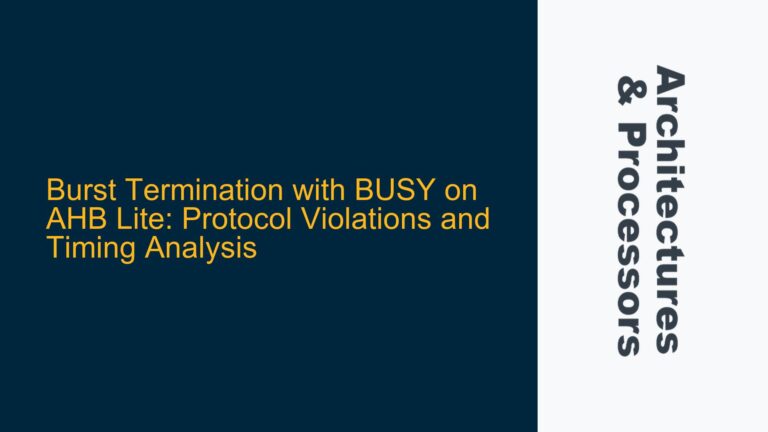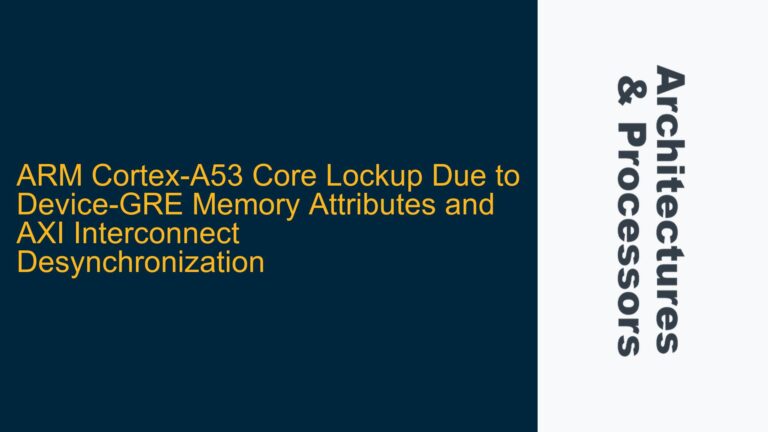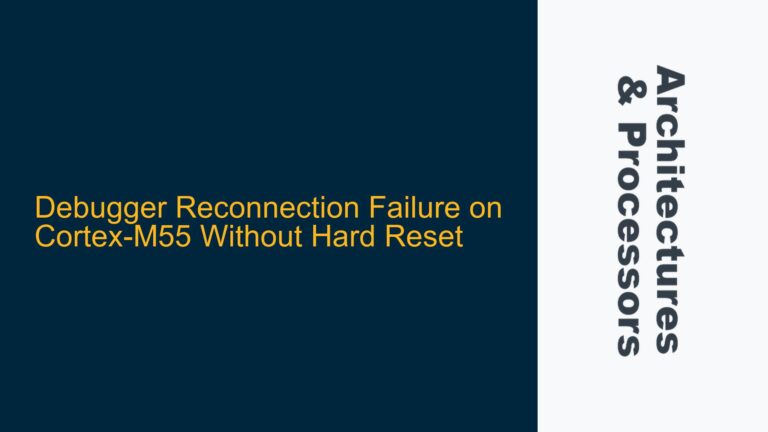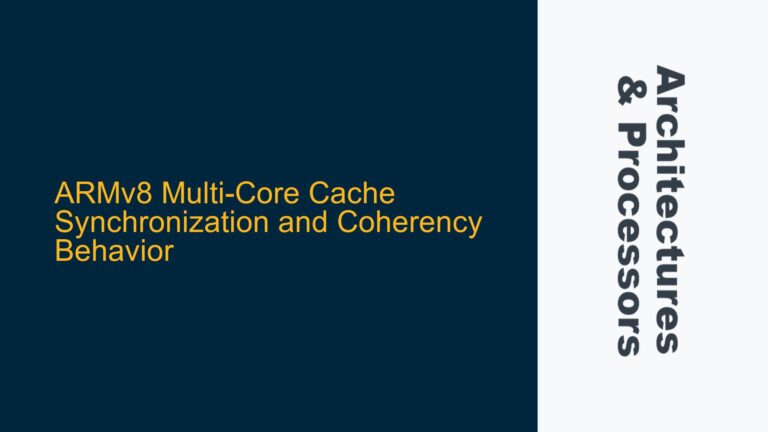PL230 DMA Controller Arbitration Cycle Consumption and Timing Analysis
The PL230 DMA controller is a critical component in many ARM-based embedded systems, responsible for managing data transfers between peripherals and memory without CPU intervention. One of the key aspects of its operation is the arbitration process, which determines how the DMA controller allocates its resources among multiple channels. Understanding the arbitration cycle consumption is essential for optimizing system performance, especially in real-time applications where latency and throughput are critical.
The arbitration process in the PL230 DMA controller involves selecting the next channel to service based on priority and availability. Each arbitration cycle consumes a specific number of clock cycles, which can vary depending on the configuration and the number of active channels. In typical implementations, the arbitration process can take between 2 to 5 clock cycles, but this can increase if there are multiple high-priority channels contending for access. The exact number of cycles can be determined by analyzing the controller’s timing diagrams and configuration registers.
The timing diagram provided in the PL230 documentation (Figure 2-9) illustrates the sequence of operations during a DMA transfer. The diagram shows that the DMA controller performs several read operations before initiating the actual data transfer. These include reading the channel configuration (rc), the source data end pointer (rsp), and the destination data end pointer (rdp). Each of these operations consumes a certain number of cycles, and the cumulative effect can impact the overall performance of the DMA transfer.
Memory Pointer Fetching and Data Structure Reading in PL230 DMA
The PL230 DMA controller fetches the source and destination end pointers (rsp and rdp) before every read (RD) and write (WD) operation. This behavior is necessary to ensure that the controller has the correct memory addresses for the data transfer. The source data end pointer (src_data_end_ptr) indicates the last address in the source memory region, while the destination data end pointer (dst_data_end_ptr) indicates the last address in the destination memory region. By fetching these pointers before each data transfer, the controller can verify that the transfer does not exceed the allocated memory regions, preventing potential memory corruption or data loss.
The fetching of these pointers is not redundant; it is a deliberate design choice to ensure data integrity and correct operation. The PL230 DMA controller must always have the most up-to-date information about the memory regions involved in the transfer. This is particularly important in systems where the memory regions may be dynamically allocated or modified during runtime. By fetching the pointers before each transfer, the controller can adapt to changes in the memory layout and ensure that the data is transferred correctly.
The timing diagram also shows that the controller reads the channel configuration (rc) before fetching the source and destination end pointers. The channel configuration includes information such as the transfer direction, data size, and addressing mode. This configuration is essential for the controller to determine how to perform the transfer. The sequence of operations (rc, rsp, rdp) ensures that the controller has all the necessary information before initiating the data transfer.
Data Structure Reading Discrepancy and Configuration Word Analysis
The PL230 DMA controller is designed to read a data structure that contains the channel configuration and memory pointers. According to the datasheet, the controller reads four words when it reads the primary or alternate data structure. However, the timing diagram shows only three word reads (rc, rsp, rdp) before the first data transfer. This discrepancy can be explained by analyzing the structure of the data being read.
The primary data structure typically includes the following four words:
- Channel configuration (rc)
- Source data end pointer (rsp)
- Destination data end pointer (rdp)
- Unused word (reserved for future use or padding)
The timing diagram may not explicitly show the fourth word (unused word) because it is not actively used in the current transfer. The controller still reads this word as part of the data structure, but it does not perform any operations based on its content. This is why the diagram only shows three word reads (rc, rsp, rdp) before the first data transfer. The fourth word is read but not depicted in the diagram, leading to the apparent discrepancy.
The unused word in the data structure serves as a placeholder for future enhancements or additional configuration options. It ensures that the data structure is aligned to a specific memory boundary, which can improve performance in some systems. The PL230 DMA controller is designed to handle this unused word efficiently, and its presence does not impact the overall operation of the controller.
Detailed Troubleshooting Steps for PL230 DMA Controller Issues
Verifying Arbitration Cycle Consumption
To verify the number of cycles consumed during arbitration, you can use a logic analyzer or an oscilloscope to monitor the DMA controller’s signals. Set up the system to perform a series of DMA transfers and observe the arbitration process. Measure the time between the arbitration request and the start of the data transfer to determine the number of cycles consumed. Compare this measurement with the expected values from the datasheet to ensure that the arbitration process is functioning correctly.
If the arbitration cycle consumption is higher than expected, check the configuration of the DMA channels. Ensure that the priority levels are set correctly and that there are no conflicts between channels. High-priority channels should be serviced first, and lower-priority channels should wait until the high-priority transfers are complete. Adjust the priority levels if necessary to reduce the arbitration cycle consumption.
Ensuring Correct Memory Pointer Fetching
To ensure that the PL230 DMA controller is fetching the correct memory pointers (rsp and rdp), you can use a debugger to inspect the memory regions before and after the transfer. Set breakpoints at the start and end of the DMA transfer and examine the values of the source and destination end pointers. Verify that these pointers point to the correct memory regions and that they are updated correctly during the transfer.
If the pointers are incorrect, check the initialization code for the DMA controller. Ensure that the source and destination end pointers are set correctly before starting the transfer. Also, verify that the memory regions are not being modified by other parts of the system during the transfer. Use memory barriers or synchronization mechanisms to prevent concurrent access to the memory regions.
Resolving Data Structure Reading Discrepancies
To resolve the discrepancy between the datasheet and the timing diagram regarding the number of words read from the data structure, you can use a debugger to inspect the memory accesses during the transfer. Set a breakpoint at the start of the DMA transfer and examine the memory addresses being read. Verify that the controller is reading four words (rc, rsp, rdp, and the unused word) from the data structure.
If the controller is not reading the fourth word, check the configuration of the data structure. Ensure that the data structure is correctly aligned in memory and that it includes the unused word. Modify the initialization code to include the unused word if necessary. Also, verify that the controller’s configuration registers are set correctly to read the entire data structure.
Optimizing DMA Transfer Performance
To optimize the performance of the PL230 DMA controller, you can adjust the configuration of the channels and the data structures. Use burst transfers instead of single-word transfers to reduce the overhead of fetching memory pointers and channel configuration. Set the burst size to the maximum allowed by the controller and the memory system to maximize throughput.
Also, consider using double-buffering or ping-pong buffering techniques to overlap data transfers with processing. This can reduce the latency of the DMA transfers and improve the overall performance of the system. Configure the DMA channels to use interrupts or event signals to notify the CPU when a transfer is complete, allowing the CPU to start processing the data while the next transfer is being prepared.
Debugging Common PL230 DMA Controller Issues
Common issues with the PL230 DMA controller include incorrect data transfers, memory corruption, and performance bottlenecks. To debug these issues, use a combination of logic analyzers, debuggers, and performance profiling tools. Monitor the DMA controller’s signals and memory accesses to identify the root cause of the problem.
For incorrect data transfers, verify that the source and destination memory regions are correctly configured and that the data structure is being read correctly. For memory corruption, check for concurrent access to the memory regions and use synchronization mechanisms to prevent race conditions. For performance bottlenecks, analyze the arbitration process and adjust the channel priorities and burst sizes to optimize throughput.
By following these troubleshooting steps and optimizations, you can ensure that the PL230 DMA controller operates correctly and efficiently in your embedded system. The key is to carefully analyze the controller’s behavior, verify the configuration and memory accesses, and make adjustments as needed to achieve the desired performance and reliability.
